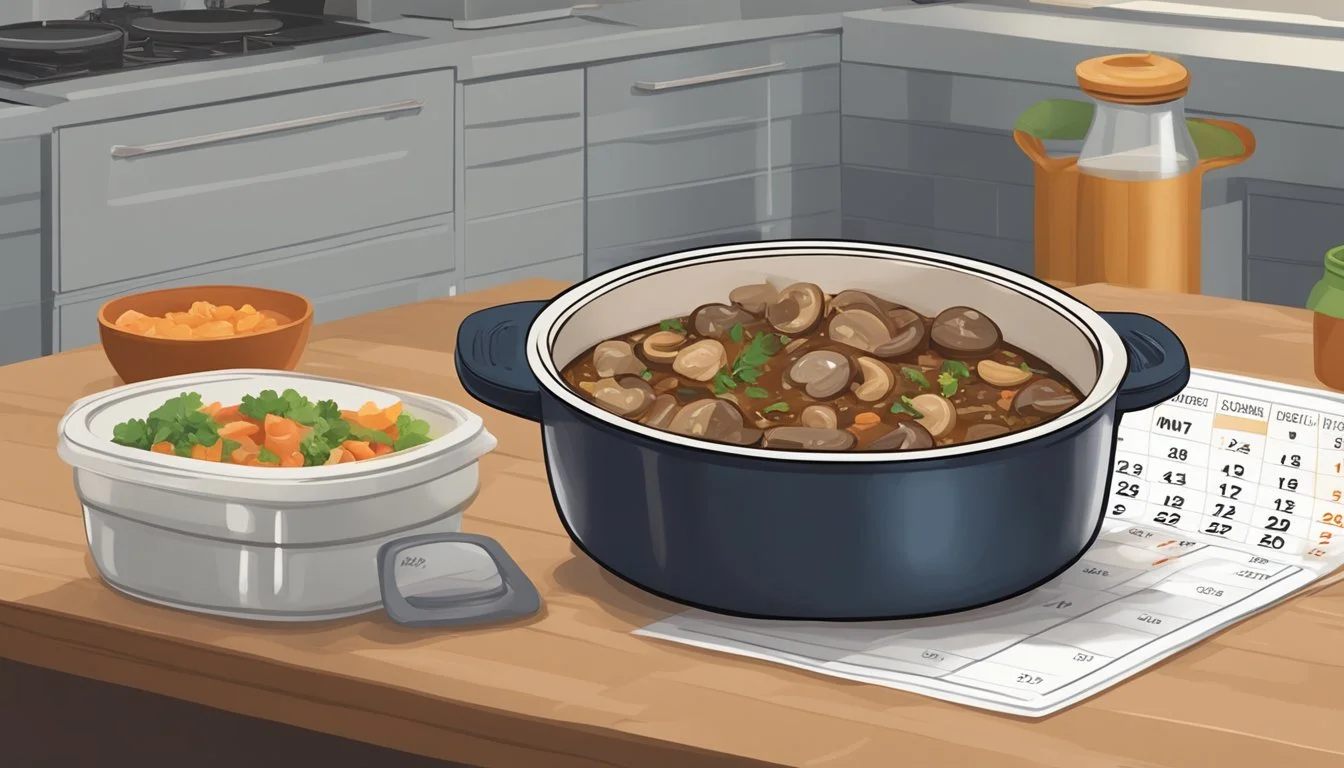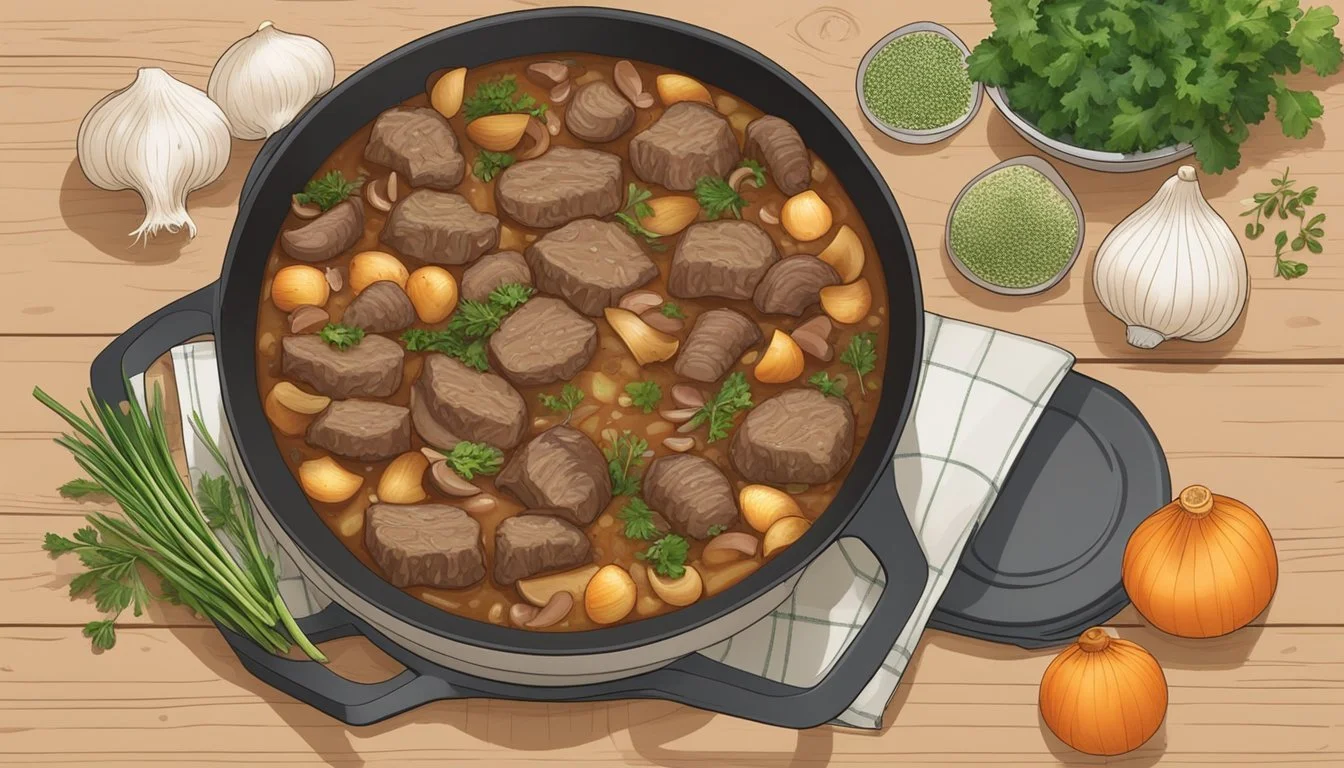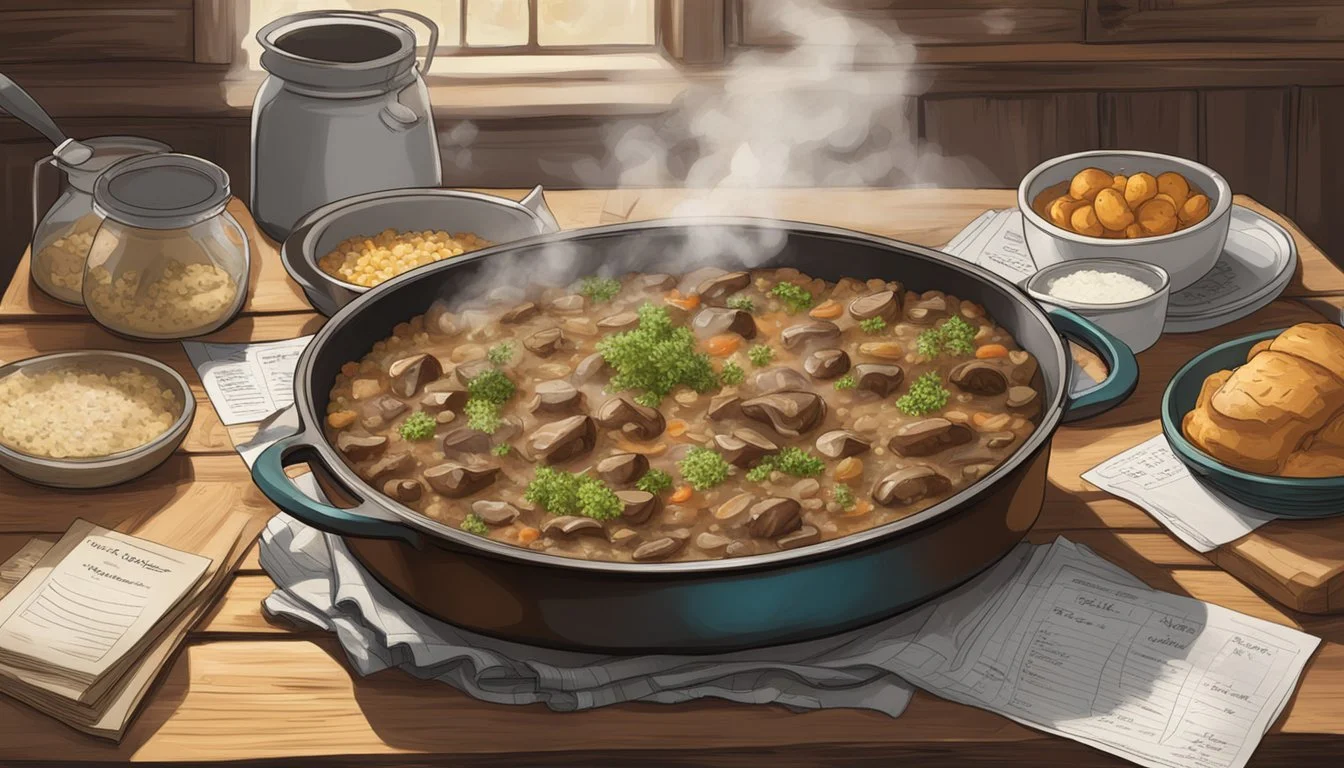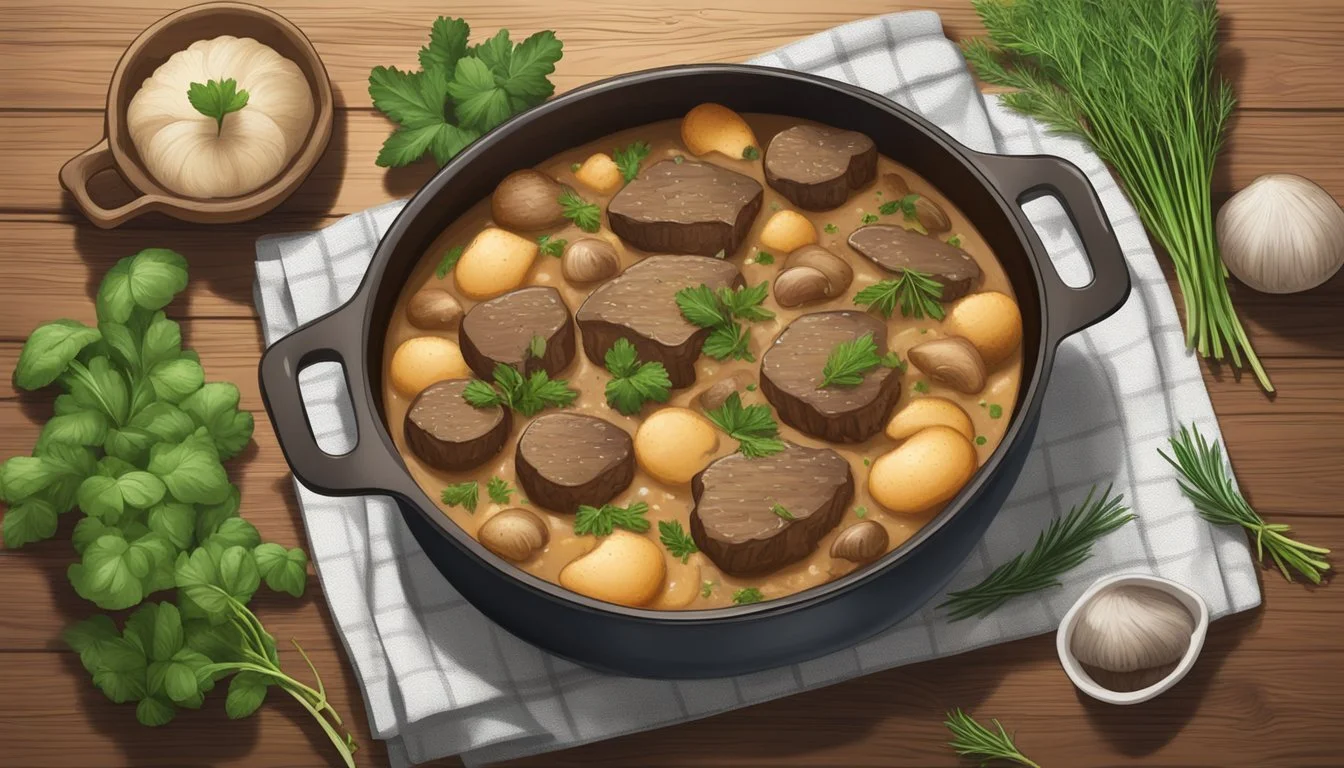How Long Does Beef and Mushroom Casserole Last?
Storage Tips and Best Practices
Beef and mushroom casserole is a hearty dish beloved in many households for its comforting flavors and ease of preparation. Whether cooked for a family dinner or prepared in advance for busy weeknights, understanding its shelf life is crucial to enjoying it safely. Properly stored, beef and mushroom casserole can last up to four days in the refrigerator.
Storing casserole effectively requires allowing it to cool to room temperature before refrigerating to maintain texture and flavor. After cooking, transfer the casserole into airtight containers or cover it tightly with plastic wrap or aluminum foil. For longer storage, freezing is a viable option, extending its life to about three months.
Maintaining food safety involves not just proper storage but also reheating practices. When ready to enjoy your leftovers, ensure the casserole is reheated to an internal temperature of 165°F (74°C) to eliminate any potential bacteria. This practice ensures that every bite is just as delicious and safe as when it was first made.
Safety and Shelf Life
Proper storage of beef and mushroom casserole is crucial for safety and maintaining quality.
Leftovers should be placed in the refrigerator within two hours of cooking. This helps prevent bacterial growth.
Use an airtight container for storing leftovers. This minimizes exposure to air and contaminants, preserving the casserole's taste and texture.
In the refrigerator, a beef and mushroom casserole remains safe to eat for up to 3-4 days.
For longer storage, consider freezing. When properly sealed, the casserole can last in the freezer for 2-3 months. Ensure the casserole is completely cooled before freezing to avoid ice crystals.
When reheating, bring the dish to an internal temperature of 165°F (74°C). This kills any harmful bacteria.
Refrigerator Shelf Life Table:
Food Type Refrigerator (40°F or below) Freezer (0°F or below) Beef & Mushroom Casserole 3-4 days 2-3 months
Freezer Shelf Life Table:
Storage Method Freezer Duration Airtight Container 2-3 months
Always check for signs of spoilage before consuming leftovers. Mold, off-odors, or unusual textures indicate it’s best to discard the casserole.
Using these storage guidelines ensures the casserole remains safe and flavorful.
Storing Procedures
Proper storage of beef and mushroom casserole is essential to maintain its freshness and prevent spoilage. This section covers refrigeration and freezing methods to ensure the casserole remains safe to eat.
Refrigeration
Beef and mushroom casserole can be stored in the refrigerator for up to four days. It should be cooled to room temperature before refrigeration to avoid raising the appliance's internal temperature. Use airtight containers to minimize exposure to air and bacteria, which helps preserve the dish. It's beneficial to label the container with the date it was made to keep track of its shelf life.
Keeping the refrigerator set at or below 40°F (4°C) ensures the casserole stays fresh. When reheating, make sure it reaches an internal temperature of 165°F (74°C) to kill any potential bacteria. Discard any casserole that exhibits a sour smell, mold, or an unusual texture.
Freezing
To extend the shelf life of beef and mushroom casserole, freezing is an excellent option. Transfer the cooled casserole to freezer-safe, airtight containers or heavy-duty freezer bags. Removing as much air as possible from the containers before sealing helps prevent freezer burn.
Label the container or bag with the date it was frozen. Generally, the casserole can last for up to three months in the freezer. When ready to eat, thaw the casserole in the refrigerator overnight and reheat to an internal temperature of 165°F (74°C) for safe consumption.
Properly storing the casserole through refrigeration or freezing ensures it remains delicious and safe to eat for future meals.
Reheating Instructions
To enjoy your beef and mushroom casserole leftovers, follow these reheating steps for optimal results.
Oven Reheating:
Preheat the oven to 350°F.
Place the casserole in an oven-safe dish.
Cover with aluminum foil to retain moisture.
Bake for 25-30 minutes, or until the internal temperature reaches 165°F.
Microwave Reheating:
Transfer a portion to a microwave-safe dish.
Cover with a moist paper towel.
Microwave on medium power for 2-3 minutes.
Stir halfway through and ensure it reaches 165°F.
Stovetop Reheating:
Place the casserole in a saucepan.
Add a splash of water or broth.
Heat over medium heat, stirring occasionally.
Cook until heated through and reaching 165°F.
Reheating larger portions may take additional time. Always ensure the casserole is thoroughly heated before serving.
Ingredients Overview
The key elements of a beef and mushroom casserole include the choice of meat, the variety of mushrooms, and essential additional ingredients like onions, garlic, spices, and broth. Understanding these components ensures a flavorful and satisfying dish.
Meat Selection
Beef is the primary protein used in a beef and mushroom casserole. Ground beef is commonly used for its ease of cooking and even distribution throughout the dish. Chuck steak, cut into small pieces, offers a hearty, tender option after slow cooking. Some recipes may choose to substitute with ground turkey for a lighter protein source. Meat selection impacts the final taste, so choosing high-quality meat is crucial. Whether it's fatty or lean cuts, browning the meat properly before combining it with other ingredients enhances the depth of flavor.
Mushroom Varieties
Mushrooms bring earthy, umami-rich flavors to the casserole. Sliced white mushrooms are a popular choice due to their mild taste and availability. Cremini mushrooms offer a slightly more robust flavor, while portobello mushrooms provide a meaty texture that complements the beef. Fresh mushrooms should be cleaned and sliced thinly to ensure even cooking. Including a variety of mushrooms can enhance the dish's complexity. Combining mushrooms creates a balanced texture and taste profile, adding richness and depth.
Additional Key Ingredients
Onions, garlic, and black pepper are essential for building the casserole's base flavor. Sautéed onions add sweetness, while minced garlic provides a pungent aroma. A mix of salt and black pepper seasons the dish properly. Another staple is cream of mushroom soup, giving creaminess and integrating the flavors. Beef broth or beef stock adds moisture and a savory backbone. Plain flour, combined with butter, can help thicken the sauce. Sour cream incorporates tanginess, while shredded cheese adds a creamy texture on top. Other vegetables, like spinach or potatoes, can be included for variety. Thyme or other herbs enhance the taste, making every bite flavorful and aromatic.
Nutritional Information
Beef and mushroom casserole offers a balanced mix of nutrients, making it a comforting yet hearty meal choice.
One serving typically contains around 250-350 calories. The variation depends on specific ingredients and their quantities.
Main Nutrients:
Protein: Provides a substantial amount, with an average of 20-25 grams per serving. Beef is the primary source of protein.
Carbohydrates: Generally around 20-30 grams, predominantly from added ingredients like rice or noodles.
Key Ingredients:
Beef: Offers protein, iron, and B vitamins.
Mushroom: Adds essential minerals, fiber, and antioxidants.
Cream of mushroom soup: Contributes both flavor and additional fat content.
Chart of Nutrients per Serving:
Nutrient Amount per Serving Calories 250-350 kcal Protein 20-25 g Carbohydrates 20-30 g Fats 15-20 g
Detailed nutritional information can vary based on the specific recipe and preparation methods used. Always consider factors such as portion sizes and additional toppings.
Preparation Guide
Preparation for beef and mushroom casserole is straightforward. Key steps include prepping ingredients, preheating the oven, and following specific cooking time frames.
Preparation Steps
Start by preheating the oven to 375°F (190°C). This ensures the oven reaches the proper temperature by the time you're ready to bake. Next, gather all the necessary ingredients: ground beef, mushrooms, onions, garlic, sour cream, cream cheese, and any seasonings or herbs you prefer.
In a large skillet, brown the ground beef with finely chopped onions and minced garlic over medium-high heat until the beef is no longer pink. It's crucial to drain any excess fat to avoid a greasy casserole. Add sliced mushrooms to the skillet and sauté until they are tender and golden brown, which takes another 5-7 minutes.
In a separate bowl, combine the softened cream cheese with fresh parsley and an egg, mixing until well combined. This mixture adds creaminess to the casserole. Transfer the beef and mushroom mixture to a 9×13 inch casserole dish, then mix in the mushroom soup, sour cream, and beef broth or stock. Stir thoroughly to combine all ingredients.
Cooking Time Frames
The casserole generally needs about 30-40 minutes to bake, but this can vary slightly depending on individual ovens. During baking, the top should become golden brown and bubbly. Keep a close eye on the dish during the last 10 minutes of baking to ensure it doesn’t overcook.
Allow the casserole to cool for about 10 minutes before serving. This resting period helps the flavors meld and makes it easier to serve neat portions. This recipe usually serves 6-8 people, making it an ideal choice for family dinners or gatherings.
Overall, the preparation and cook time combined takes about an hour, assuming all ingredients are prepped and ready to go.
Serving Suggestions
Beef and mushroom casserole pairs excellently with various side dishes to enhance the overall meal.
For a classic option, serve the casserole with a slice of garlic bread. The crispy texture and strong garlic flavor of the bread contrast well with the creamy, savory notes of the casserole.
Mashed potatoes make another fantastic accompaniment. The smooth and rich consistency of the potatoes complements the hearty nature of the beef and mushroom mixture. Adding a bit of garlic or cheese to the mashed potatoes can elevate the taste even more.
Another great pairing is a fresh green salad. Lightly dressed greens with a simple vinaigrette can balance the richness of the casserole, providing a refreshing contrast.
To add extra warmth and comfort, consider serving the casserole with steamed vegetables. Options like broccoli, green beans, or carrots can add color and a healthy element to the plate.
A side of rice or pasta also works well. The neutral taste of these staples allows the flavors of the beef and mushroom casserole to shine through.
If you're hosting a dinner, you might want to include a variety of pickles or chutneys for guests to enjoy with their portion. This can add an interesting array of flavors and textures to the meal.
These serving ideas can provide balance and variety to ensure an enjoyable dining experience.
Recipe Variations and Substitutes
To personalize a creamy mushroom casserole or adapt it to dietary needs, consider several variations and substitutes.
Vegetable Options:
Substitute mushrooms with zucchini, bell peppers, or spinach.
Add vegetables like carrots, peas, or broccoli for extra nutrition.
Protein Choices:
Replace ground beef with ground turkey for a lighter option.
Try ground chicken or vegetarian meat substitutes for different dietary preferences.
Soups and Sauces:
Swap condensed cream of mushroom soup with cream of chicken or cream of celery soup.
For a homemade touch, make a white sauce with butter, flour, milk, and seasoning.
Dairy Products:
Use Greek yogurt or light sour cream instead of regular sour cream for a healthier twist.
Cheddar can be replaced with mozzarella, Monterey Jack, or other cheeses, depending on preference.
Grains:
Instead of rice, consider using quinoa, couscous, or pasta for a different texture.
Whole-grain options can add extra fiber without compromising flavor.
Herbs and Spices:
Enhance flavor with seasonings like thyme, rosemary, or garlic powder.
A dash of cayenne pepper or smoked paprika can add a subtle kick.
Broths and Liquids:
Substitute beef broth with vegetable broth or chicken broth.
For a richer taste, add a splash of wine or soy sauce to the mixture.
Exploring these variations provides countless recipe possibilities, ensuring a flavorful meal every time. For more inspiration, platforms like Pinterest offer numerous ideas and detailed recipes.
Additional Tips and Tricks
Making a beef and mushroom casserole can be straightforward with some practical tips to enhance flavors and optimize the use of cookware. These small adjustments can significantly affect the taste and texture of your dish.
Enhancing Flavors
Use Fresh Ingredients: Fresh mushrooms, onions, garlic, and herbs elevate the dish's taste compared to using canned or dried ingredients.
Brown the Beef: Browning the beef in batches helps seal in juices and adds a rich, caramelized flavor. Avoid overcrowding the pan to ensure even browning.
Incorporate Red Wine: Adding a splash of red wine during the cooking process enriches the casserole's complexity. Let the alcohol cook off to extract the flavor without the bitterness.
Seasoning in Layers: Season the beef as it browns and again when adding other ingredients. This ensures even distribution and depth of flavor.
Simmer Slow and Low: Cooking the casserole slowly at a lower temperature breaks down the meat's collagen, leading to a tender and succulent dish.
Cookware Advice
Use a Flameproof Casserole Dish: A flameproof dish allows for consistent heat distribution and can transition from stovetop browning to oven baking without transferring the mixture.
Non-Stick Skillet for Browning: Using a non-stick or cast-iron skillet for browning the beef helps achieve an even sear without sticking.
Heavy-Duty Ovenware: Opt for heavy-duty ovenware to retain heat evenly, ensuring the casserole cooks uniformly. A 9×13 inch dish size is typically recommended.
Lid Fit Checks: Ensure the casserole dish's lid fits tightly to trap moisture and heat within the dish. This reduces the risk of drying out while cooking.
Utilize a Slow Cooker: For a hands-off approach, a slow cooker can be ideal. Cook on low for 6-8 hours, perfect for tenderizing the beef while melding flavors seamlessly.
These practical tips and cookware advice will elevate your beef and mushroom casserole from a standard dish to a family favorite. By paying attention to ingredients, preparation methods, and cookware, the results will be consistently delicious.








